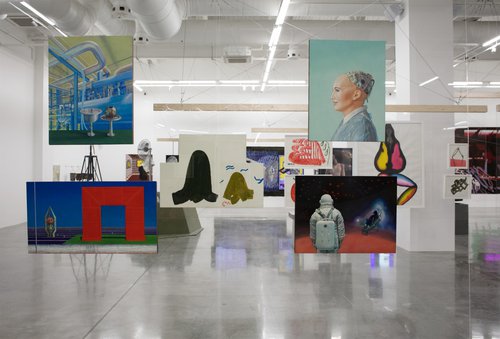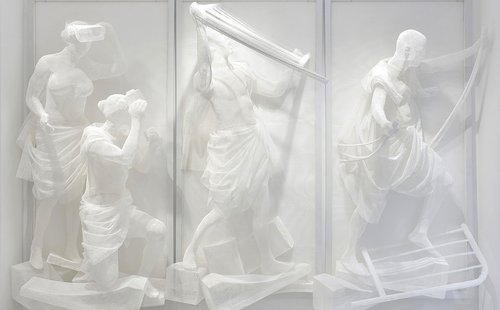Lithuania in the Spotlight at the Pompidou

Kazys Varnelis. Azora, 1971. Photo by Gediminas Trečiokas. Courtesy of Lithuanian National Museum
The contemporary art scene across the Baltic states has formed its own identity over the past three decades, today boasting numerous forward-looking art institutions and museums, yet abroad most artists from the region are still little known. As part of a season of Lithuania in France, the Centre Pompidou is bringing contemporary Lithuanian art en bloc to international audiences for the first time.
Few people outside the Baltics would be able to name even one Lithuanian artist. Although the painters of the École de Paris, such as Chaïm Soutine (1893–1943), Mark Chagall (1887–1985) and Pinchus Krémègne (1890–1981), the sculptors Ossip Zadkine (1888–1967) and Jacques Lipchitz (1891–1973), as well as the underground film-maker Jonas Mekas (1922–2019) and the avant-garde photographer Moï Ver (1904–1995), are appreciated by collectors, Lithuanian art and culture, both post-war and contemporary, have remained almost unknown until now, even in artistic circles.
The Season of Lithuania in France, with over two hundred separate events, gives the public at large an unprecedented immersion in the culture of one of the smallest countries on the northeastern fringes of Europe. The launch of a diverse programme of events, entitled ‘Se voir en l’autre’, is crowned by an exhibition ‘Contemporary Art in Lithuania from the 1960s to the Present Day’ at the Centre Pompidou in the centre of Paris. The exhibition is divided into two parts, one dedicated to modernist artist Kazys Varnelis (1917–2010) and the other to contemporary artists. The selection of recent works presented by the curators gives visitors an informative insight into contemporary Lithuanian art and demonstrates how much they also have in common with their peers in the West. The country’s geographical proximity to Russia and its recent Soviet past create anxieties which have spilled over into the art and there is a sense of support for the Ukraine which permeates through parts of the show.
The show’s anchor is Kazys Varnelis who left his homeland in 1949 and lived in the United States for fifty years. His main corpus of work, created during the second half of the 1960s and onwards, is considered part of the international op-art movement. His paintings are distinguished by two key elements: their atypical and varied forms, and the light that emerges from the surface through the gradations of colour achieved by the artist's meticulous brushwork. While his paintings composed of repeating geometric shapes, such as ‘Cascada Cristalina’ of 1969 with its multitude of small parallelograms, give the impression of vibration, ‘Idiom’ creates the illusion of tubes lit up in three dimensions. ‘Vibrato’ painted in 1972 is a typical example of his works in which shapes follow the contours.
Among the contemporary exhibitors, there is a strong presence of female artists. Before regaining its independence in 1991, which it had lost in 1940, Lithuania had first been under German occupation and then the Soviet Communist dictatorship. The assemblage ‘Composition’ by Marija Teresė Rožanskaitė (1933–2007), showing a body lying on the ground, explicitly reflects this painful personal experience. Two young artists, Neringa Černiauskaitė and Ugnius Gelguda forming the duo Pakui Hardware, inspired by the work of Rožanskaitė, have created sculptural installations that reveal the vulnerability of human life. Elvyra Kairiūkštytė (1950–2006) belongs to the generation that lived through the country’s pre- and post-independence era. Her large, spontaneously executed drawings, expressing a certain anguish, are a mixture of folk scenes, symbols and strange characters.
Eglė Rakauskaitė is one of the best-known artists in Lithuania today. In her video ‘Expulsion from Paradise’, she demonstrates the persistence of patriarchal culture through thirteen women, symbols of compliant woman in white dresses with masculine jackets. In a moving Super 8 film by Emilija Škarnulytė (b. 1987), who won Pinchuk’s Future Generation Art Prize in 2019, we follow the wanderings of her grandmother in the sculpture garden in Vilnius. This old woman, blinded by the Chernobyl nuclear disaster, uses her hands to feel the socialist-realist sculptures she saw every day during the Soviet times.
The Season of Lithuania in France 2024
Paris, France
14 September, 2024 – 6 January, 2025

















